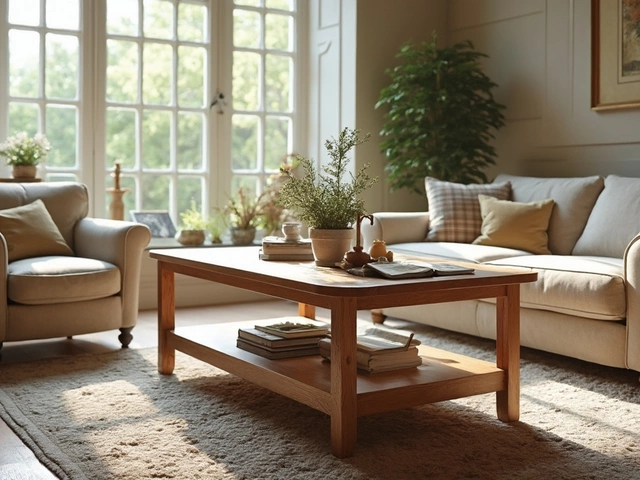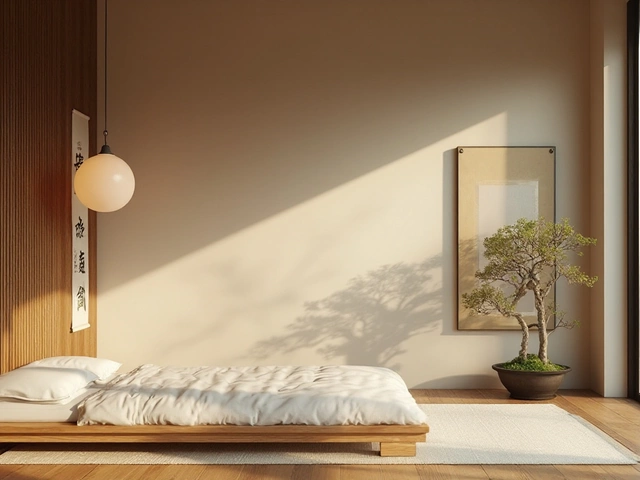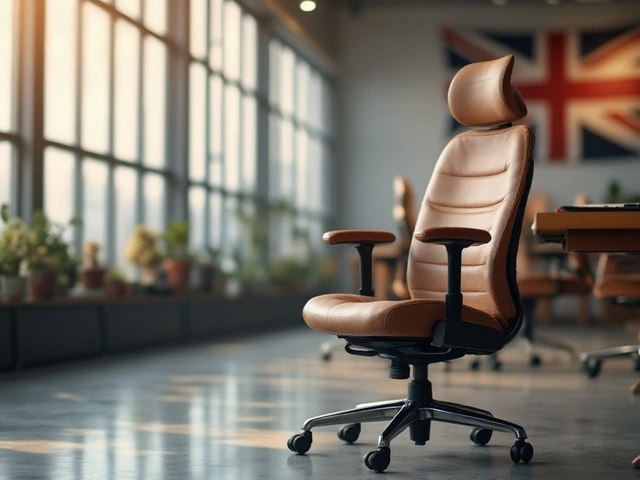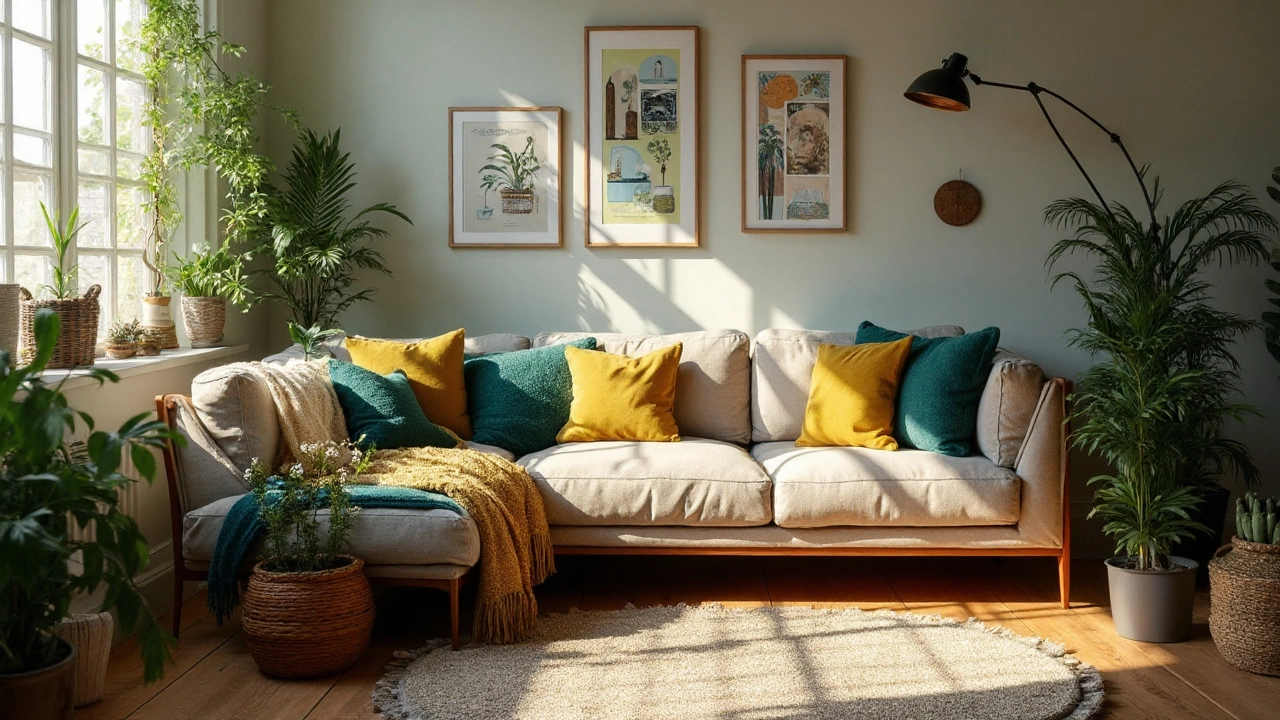 5
Aug,2025
5
Aug,2025
Did you know that the humble corner sofa actually traces its roots back to the Art Deco movement of the 1930s? Designers needed a solution for small, oddly-shaped living rooms in growing cities. Today, these L-shaped wonders are everywhere, but getting them to look sharp—not just comfortable—takes a bit more than tossing on a few cushions. Most folks throw a corner sofa in and call it a day, but your lounge deserves better. Want your corner sofa to go from "just a seat" to "best part of the room"? It's easier than you think.
Finding the Perfect Spot
Where your corner sofa goes will set the mood for your whole space. Some people wedge their sofa into the corner and stop there-but you're missing tricks if you always think of corners. Pulling your corner sofa out just a little bit creates more energy in the room. It sounds strange, but that gap lets you slide in a tall lamp or big plant. You can access plugs, and it keeps those back cushions plump for years since they can breathe.
Think about how you use the room. Have a group of mates over most weekends? Leave enough room in front for a coffee table big enough for snacks and board games. Kids running around? Angle the sofa so there's a wide, safe path for play (works wonders for my daughter Orla’s dance routines). If you have a fireplace or big window, try floating the sofa facing out from the wall to take advantage of the best view or chat spot. Open-plan spaces, like those Melbourne warehouse conversions everyone loves, often work better with the sofa "zoning" the living area, breaking up huge rooms into cozy nooks. Even if you have a classic rectangular room, a small rearrangement can spark major "Wow, what changed?" comments.
My last rental had zero architectural drama— so, I made my own. I angled the sofa so the longer side ran along the main wall but stopped a metre short. I tucked in a bookshelf behind it. All of a sudden, the place felt intentionally designed, and I had a sneaky spot for Orla’s bedtime stories. No architectural marvel needed—just a bit of guts to pull things away from the wall and see what happens.
Mixing Textures, Colours, and Layers
Corner sofas are big. If they're all the same colour and fabric, they can swallow a room—or worse, look like they're just "renting space." Playing with texture is the easiest fix. Even if your sofa is simple grey or charcoal, a chunky throw draped over one section and a velvet pillow or two completely changes the game. Here’s what designers in Melbourne do: they layer. Start with the basics—a fitted cover or a large, neatly folded blanket across the back, then stack different pillow shapes and textures along both sides. Go for three or five pillows per arm (odd numbers are magic here) and mix it up: chunky knits, soft mohair, bold prints, neutral linen. The variety keeps your eye moving and fakes that boutique hotel energy at home.
Now, for colour. If your sofa is neutral, introduce two accent colours that tie into the rest of your decor or art. For example, terracotta and teal almost always look rich on grey, and they echo the earthy yet modern vibes a lot of Aussie decorators love. Don’t hold back from swapping textiles with the seasons. In summer, try cotton or linen pillows and a light, bright throw. In winter, make it heavier—deep jewelled velvet, rich ochre, or even thick wool look chic and intentional.
For a real-world example: after we painted our living room a pale sage, I went wild with burgundy and blush pillows on our navy sofa. My mum said it looked "designer"—but really, it was just a mix of textures and some old throws from the op shop (thrift store). Go ahead, be playful! The worst case? You move things around again—no sweat, and no costly redecorating sessions.
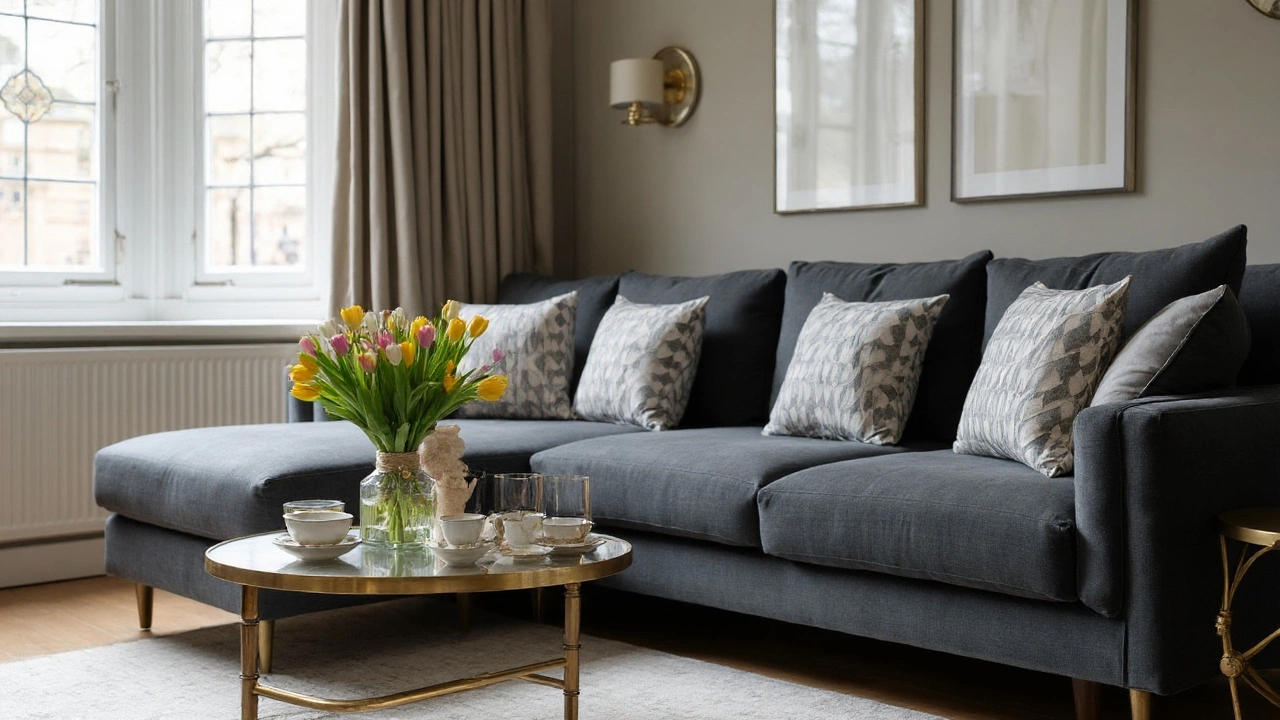
Styling with Tables, Rugs, and Accessories
Your corner sofa isn't the whole show—it needs sidekicks to give it context and style. Even if you rent and can't rip out carpet, a thoughtfully chosen rug can set your lounge apart. Make it big enough so at least the front feet of the sofa sit on it. This pulls the area together and makes everything look intentional, not “chucked in.”
Picking the right table takes more thought than people realize. If the corner sofa makes an “L,” a round coffee table is often best. No bang-your-shins edges, and it’s easy to scoot around. Plus, round tables soften all the straight lines. For smaller spaces, nested tables or a narrow bench can double as places to perch drinks or snacks, and tuck away fast when the kiddos get rowdy. Add a slim side table at the arm—perfect for your cup of tea, phone, or one of Orla’s crayon masterpieces. Smart style doesn’t need to cost the earth. Some of my favourite tables are salvaged from local markets. They're practical, loaded with character, and far cheaper than the brand-new stuff.
Then there are accessories. Don’t just focus on the sofa—look around it. Tall floor lamps or hanging pendants draw attention upward, making the lounge feel bigger. A big plant next to the short side of the “L” adds colour and life (the snake plant is gold if, like me, you forget to water). And don’t forget the wall above. A gallery of family photos or a massive print instantly makes the space feel curated, like you planned every detail—even if last week it still looked like a warehouse sale clearance section.
Here’s a handy table showing the impact of common accessories on the perceived size and mood of your lounge:
| Accessory | Impact on Space | Recommended For |
|---|---|---|
| Large rug | Makes the area feel unified, anchors furniture | Open-plan rooms, echoes colour themes |
| Round coffee table | Softens harsh lines, easy access for all seats | Compact living rooms, high-traffic spaces |
| Floor lamp | Creates visual height, cozy atmosphere | Reading nooks, dimly lit corners |
| Plants | Adds life, breaks up monotony | Empty corners, beside the short edge of sofa |
| Wall art | Draws eye up, personalizes space | Behind sofa, framing the seating area |
Lighting Tricks and Ambience
Great lighting does what no cushion, rug, or fancy coffee table can: it makes people want to actually sit down and relax. Overhead lights can be harsh, so swap in lamps or dimmable LEDs if you can. If your place gets great natural light during the day, position the *corner sofa* to catch the best sun. In gloomy spots, play with layers of light. For instance, a bright task lamp near the sofa corner is great for reading, while a big paper lantern overhead is soft and glowy for movie nights.
String lights aren’t just for kids’ rooms or Christmas—they’re cheap, easy, and when looped behind the sofa or along the skirting board, they add subtle warmth. Candles can work too (even the battery ones; no need for worries about pets or cheeky toddlers). Mood is everything. If you want the room to feel laid-back and intimate, amber bulbs are your secret weapon. Throw in a few reflective surfaces—a shiny tray on the coffee table or metallic planters for your snake plant—and the whole room sparkles by night.
Want to highlight arty wall prints or a textured wallpaper? Try clamp-on picture lights. Design-y, but you can pick them up secondhand for less than your takeaway pizza bill. I once wrapped a simple lampshade in colourful fabric scraps—art project for me and Orla, instant pop of colour for the lounge. Turn off the harsh ceiling lights, flick on your handcrafted lamps, and suddenly even the dreariest Melbourne winter evening feels special.
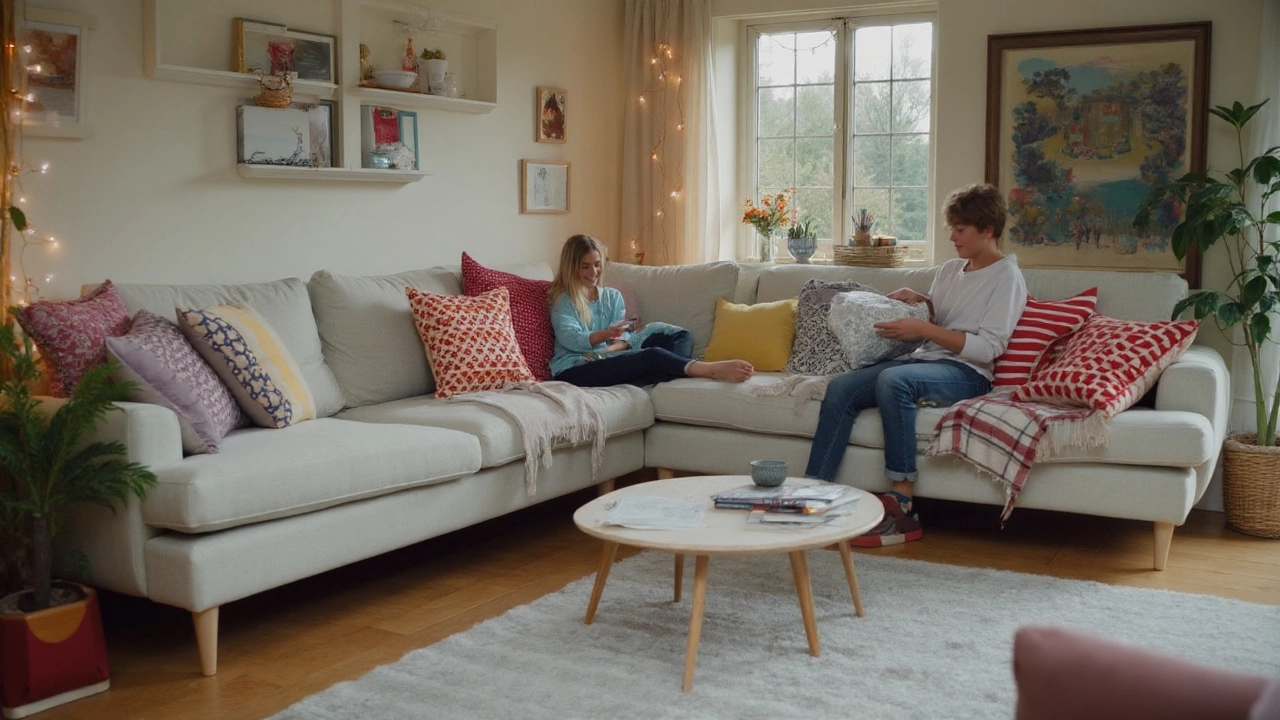
Keeping It Tidy—And Still Lived-In
Here’s where the real magic happens. Styling a corner sofa isn’t just about how it looks when every pillow is fluffed and the throw is crisp. It’s about making the whole room feel like somewhere you want to actually sit, eat, sprawl or nap. That means building in smart, subtle storage. Opt for a sofa with hidden compartments or store extra throws in a basket tucked behind the arm. Low cube shelves along the sofa’s back are a lifesaver for books, remotes, or even your kid’s puzzle pieces. Looks tidy, but everything you want is an arm's reach away—exactly how modern living rooms should roll.
The secret to avoiding clutter? Pick a spot for daily-use items and train everyone—kids, friends, partners—to use it. For example, we have a big old bowl on the coffee table: keys, remotes, dice from whatever board game we're on this week. At the end of the day, a quick reset gets the room guest-ready in five minutes flat. Rotate accessories every so often: swap in new photo frames, trade the big plant for fresh-cut flowers, cycle in those "best guest" mugs. It never feels stale, but it’s never messy either. And always remember—nothing’s too precious for everyday life. The best rooms look like someone lives there, not a museum. Orla’s “art” graces our gallery wall. Friends collapse into the *corner sofa* without worrying about making a dent. That’s genuine comfort, and that’s what makes any sofa truly look good.

